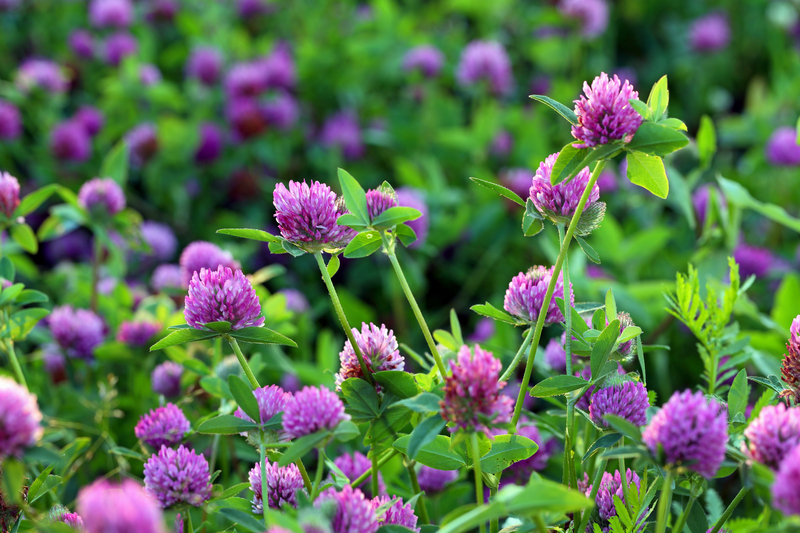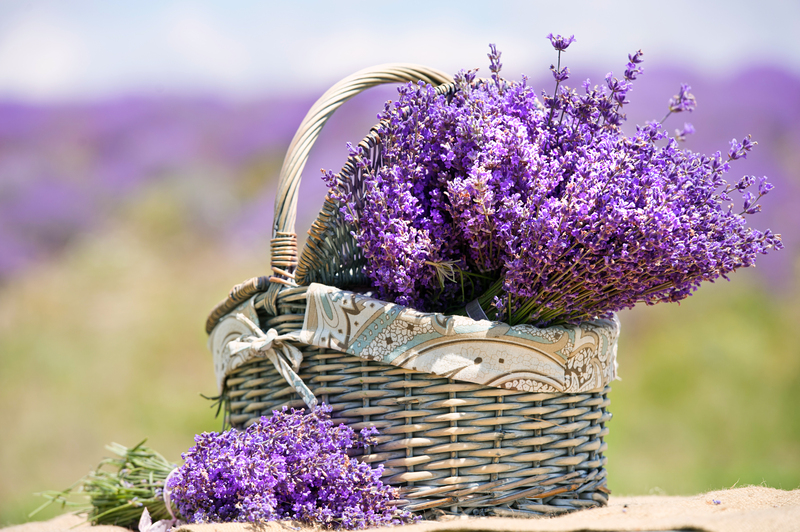How to Shield Your Garden Plants Against Winter's Chill
Posted on 30/08/2025
How to Shield Your Garden Plants Against Winter's Chill
Winter brings a unique set of gardening challenges, particularly the need to protect your cherished plants from freezing temperatures, frost, biting winds, and fluctuating weather conditions. While some plants naturally withstand the cold, many others require extra care to survive until the arrival of spring. If you've ever wondered how to shield your garden plants against winter's chill, this comprehensive guide offers practical, actionable information to safeguard your garden throughout the coldest months.
Understanding the Impact of Cold Weather on Garden Plants
Before discussing strategies to protect your garden plants from cold weather, it's essential to recognize how winter affects different types of plants. Cold temperatures, frost, snow, and wind can damage or even kill sensitive flora. Here's how:
- Frozen roots: Prolonged cold can freeze roots, impeding their ability to absorb water and nutrients.
- Frost damage: Sudden fluctuations in temperature cause cells in leaves and stems to rupture, leading to blackened or mushy tissues.
- Desiccation: Dry winter winds and frost pull moisture from leaves, causing them to dry out, a process called "winter burn."
- Heaving: Repeated freezing and thawing can literally push plants out of the soil, damaging their roots.
Shielding your garden plants from the cold is not just about temperature; it's about creating a stable microclimate that caters to the specific needs of your garden.

Choosing the Right Plants for Winter Survival
One of the most effective ways to protect your garden from winter is to select plants intended for your USDA hardiness zone. Native and cold-hardy plants naturally possess adaptations for surviving winter's chill.
- Deciduous shrubs and trees: Shed their leaves, reducing exposure to cold and moisture loss.
- Evergreens: Thick, waxy leaves or needles help reduce water loss and resist windburn.
- Perennials: Many die back to their roots, which are protected underground.
- Annuals: Typically do not survive winter except in mild climates; plan to replace these each spring.
While choosing hardy plants makes things easier, many gardeners cultivate exotic or sensitive varieties. For these, extra measures are necessary to defend your garden plants against the winter chill.
Essential Strategies to Protect Your Garden Plants from the Cold
1. Mulching: Your First Line of Defense
Mulching is one of the simplest, most effective ways to insulate garden plants against winter's chill. A thick layer of mulch moderates soil temperature and prevents roots from freezing.
- Materials: Use straw, shredded leaves, wood chips, bark, or even evergreen boughs.
- How much: Apply a 3-6 inch layer around the base of perennials, shrubs, and trees.
- Timing: Mulch after the ground freezes to retain frozen conditions and prevent premature growth during mid-winter thaws.
Tip: Keep mulch a couple of inches away from stems and trunks to prevent rot and pest intrusion.
2. Creating Physical Barriers
Physical barriers shield plants from wind, frost, and heavy snow. Options include:
- Burlap wraps: Use burlap fabric to create protective cylinders around shrubs and small trees. Secure with stakes for stability.
- Garden fleece or frost blankets: Lightweight and breathable, these covers preserve warmth while letting in light and moisture.
- Cloche covers: Perfect for small plants; bell-shaped covers made from glass, plastic, or recycled bottles trap heat around vulnerable flowers and vegetables.
- Windbreaks: Temporary fences made from fabric, plastic, or natural materials like evergreen branches deflect icy winds and reduce moisture loss.
Tip: Remove covers occasionally during mild spells to prevent overheating and allow air circulation.
3. Watering Wisely Before the Freeze
Water acts as insulation. Moist soil retains warmth better than dry soil. Give your garden a deep watering before the ground freezes so plants enter dormancy well-hydrated. Avoid overwatering, as soggy soil can freeze solid and suffocate roots.
4. Location, Location, Location: Plant Placement Matters
Position cold-sensitive plants in the most protected areas of your garden:
- Near house walls: Buildings radiate heat, creating warmer microclimates.
- On south-facing slopes: These spots receive more sunlight, reducing frost risk.
- Behind windbreaks or hedges: These barriers slow chilling winds.
Strategic planting means less work shielding your garden plants against winter's chill in the long run.
5. Pruning and Maintenance
Proper pruning and fall maintenance help plants focus their energy on strong, protected growth.
- Prune dead or diseased branches: Remove weak limbs that could break under snow or ice.
- Avoid heavy pruning in fall: Pruning stimulates new growth, which is highly vulnerable to cold.
- Clean debris: Rake up leaves and fallen fruits to prevent pests and fungal diseases.
Special Tips for Certain Plant Types
Protecting Perennials and Bulbs
- Cut back stems: For many perennials, cut stems to a few inches above ground once growth dies down.
- Extra mulch: Bulbs and tender perennials benefit from a thick mulch or leaf blanket.
- Dig and store: Lift non-hardy bulbs (like dahlias or gladiolus), dry them, and store them in a frost-free place until spring.
Sheltering Sensitive Shrubs and Trees
Young or non-cold-hardy trees and shrubs may need extra insulation in winter. In addition to wrapping trunks with burlap, consider using commercial tree guards to prevent sunscald and rodent damage. Mature evergreens often require antidesiccant sprays to reduce the risk of drying out.
Caring for Container Plants
- Move containers indoors: Unheated garages, sheds, or basements keep potted plants sheltered from the worst weather.
- Cluster pots together: Grouping enhances shared warmth and wind protection.
- Wrap containers: Bubble wrap, burlap, or old blankets insulate root balls against freeze-thaw cycles.
- Elevate pots: Place pots on feet or bricks to enhance drainage and reduce exposure to icy ground.
Shielding Vegetable Gardens
Want to continue harvesting fresh greens even in winter? Season-extending strategies help shield your vegetable garden from winter's chill.
- Cold frames and hoop houses: Offer protected, sun-warmed environments for leafy greens, carrots, and herbs.
- Row covers: Lightweight fabric lets light and rain in, but protects veggies from frost.
Common Winter Plant Protection Mistakes to Avoid
Being proactive is key, but avoid these frequent errors when trying to shield garden plants from winter:
- Wrapping too tightly: Air needs to circulate; tight covers can cause mold or breakage.
- Forgetting to water: Plants still need hydration in winter--just less frequently.
- Ignoring drainage: Mulch or barriers that trap water can lead to rot or disease.
- Removing mulch too early: Wait until last frost to ensure roots don't experience cold snaps.
Natural and Eco-Friendly Plant Protection Options
Shield garden plants from winter's chill with sustainable solutions:
- Compost mulch: Provides warmth and nutrients as it breaks down.
- Recycled materials: Old sheets, blankets, plastic jugs, and cardboard can all be repurposed as plant covers.
- Living barriers: Hedges, dense shrubs, and native grasses shelter more sensitive plants and provide winter homes for beneficial insects.
When to Remove Winter Protections
Vigilance is crucial as winter recedes. Remove barriers gradually during spring thaws. Watch weather forecasts for late-season frosts. Take mulch off in increments rather than all at once. This prevents shock and allows new growth to adjust to increasing light and temperature.

Frequently Asked Questions: How to Shield Your Garden Plants Against Winter's Chill
Q: What are the most vulnerable types of garden plants in winter?
A: Tender perennials, late-blooming shrubs, young trees, and tropical or subtropical plants are most vulnerable. Container plants also require extra care due to their exposed roots.
Q: How can I tell if my plants need protection from winter?
A: Any plant marked as "hardy to" a zone warmer than yours, as well as newly-planted, young, or stressed plants, should receive winter protection.
Q: Can I use plastic to cover my garden plants from the cold?
A: Plastic can retain excessive moisture and cause condensation-related damage. If you use plastic, ensure it's supported off the plants and remove it during sunny days.
Q: Is it better to mulch before or after the first freeze?
A: Apply mulch after the first hard freeze. This keeps the soil frozen, preventing harmful thaw/freeze cycles that damage roots.
Conclusion: Shielding Your Garden Plants from Winter's Chill
In summary, protecting your garden plants from winter's harsh conditions is not just a matter of survival--it's an investment in next season's beauty and bounty. Smart plant choice, the right use of mulch and barriers, strategic watering, and timely maintenance all play critical roles in ensuring your garden emerges from winter stronger than ever.
Remember: Each garden and plant type is unique, so observe how your plants respond and adjust your efforts from year to year. By following these strategies, you'll not only survive winter--you'll set the stage for lush, healthy growth come springtime. Your garden and its inhabitants will thank you for your care and diligence!
- Plan ahead, taking into account your local weather trends and plant needs.
- Act early, especially before the first hard frost.
- Stay observant, adjusting coverage and care as winter progresses.
Ready to shield your plants against winter's chill? A little preparation now means a flourishing garden in the year ahead!

